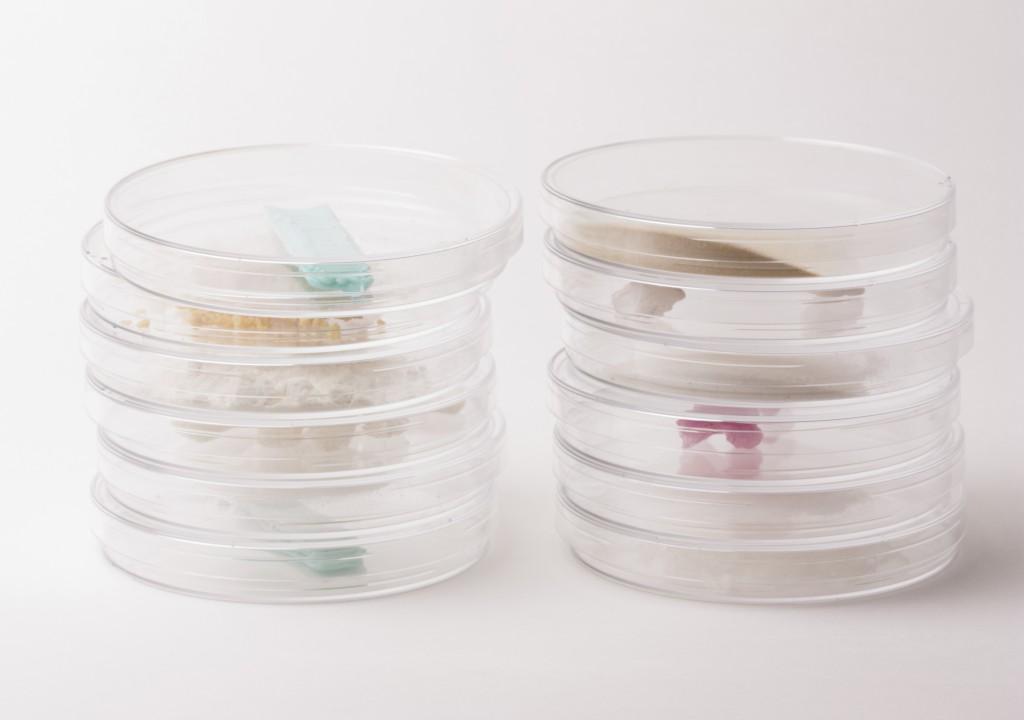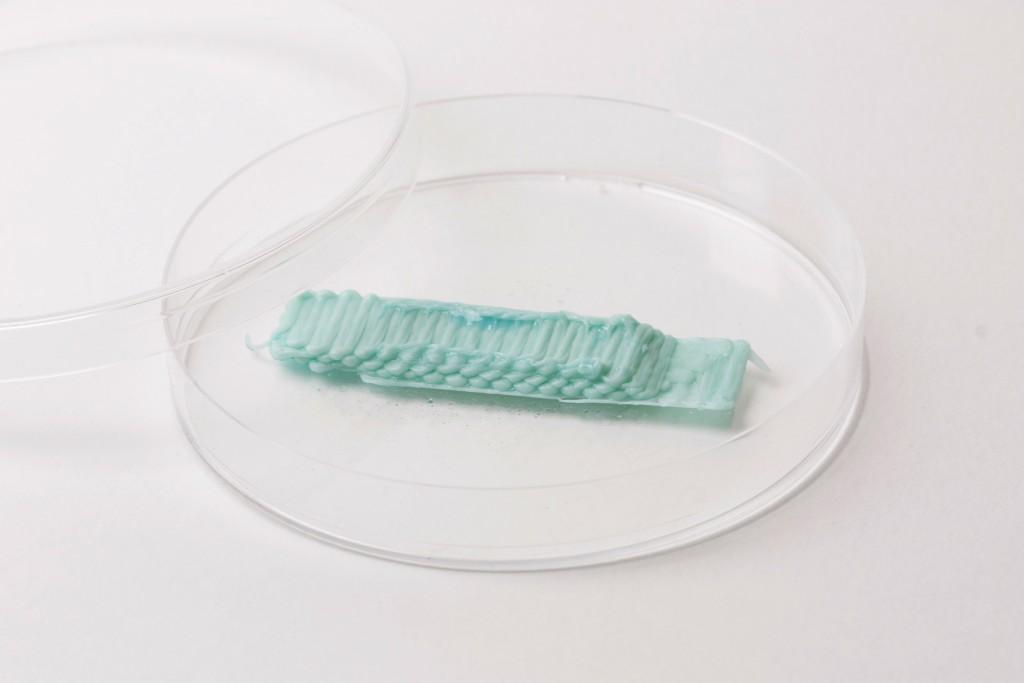Back in college I probably went through at least a pack of gum a day. I actually felt that it helped me learn better during lectures, take in more information during study time, and it had the added benefit of keeping my breath fresh at all times. Not to mention I probably burned a few hundred calories per week at the rate I was chewing it, and it likely contributed to a more chiseled jaw.
Years later, the results of a study done by 224 undergraduates at St. Lawrence University, showed that my inclinations about its impact on learning were actually correct. Researchers were able to determine that gum chewing helped during recall and memory tasks, and was shown to improve test scores of those who chewed it immediately before an exam. So how do you make gum more interesting, while convincing more people to chew it? How about 3D printing it?
That’s just what researchers at London’s Royal College of Art and Imperial College are doing. Chia-Ling Lin, who’s studying at the Royal College of Art, has teamed up with Maria Nelson, a Material Sciences PhD student from Imperial College to create Gumlab.uk. Nelson, who specializes in 3D printing with new materials within the areas of bone and cartilage, saw this as a technical challenge and decided to take on a project to 3D print chewing gum.
They started off by creating their very own customized 3D printer, call GumJet. The printer itself is currently being patented as the team works with an attorney, therefore elaborate details of how it works can not yet be revealed. The team has, however, has provided us with a video of the printer in action, which can be seen at the bottom of this article.
“I think ‘GumJet’ is a 3D chewing gum printer similar to the great gum machine in the 1964 children’s book ‘Charlie and the Chocolate Factory’ by British author Roald Dahl,” explained Chia-Ling
Lin to 3DPrint.com. “In the future 3D printed gum and food may end up in all kitchens.”
The machine itself, uses a Cartesian platform with X, Y and Z axes. The gum material, which consists of typical gum resin along with flavoring, is extruded out of a thin metal extruder in a similar fashion as that of a typical FFF/FDM printer. Layer-by-layer the machine builds up the complete piece of gum, based on coordinates provided by a computer program.
We asked Lin how the gum tasted. She told us that the flavor is very similar to that of your typical store-bought chewing gum. What’s different is its texture, as each printed layer can be felt in your mouth as you initially chew it up.
Will this idea take off? Maybe. Is this achievement pretty cool? Absolutely! The team continues to work to improve the GumJet 3D printer and hopes to refine the machine even more in the future. Would you buy a gum printer? Let us know in the GumJet forum thread on 3DPB.com.
Subscribe to Our Email Newsletter
Stay up-to-date on all the latest news from the 3D printing industry and receive information and offers from third party vendors.
You May Also Like
Precision at the Microscale: UK Researchers Advance Medical Devices with BMF’s 3D Printing Tech
University of Nottingham researchers are using Boston Micro Fabrication‘s (BMF) 3D printing technology to develop medical devices that improve compatibility with human tissue. Funded by a UK grant, this project...
3D Printing Webinar and Event Roundup: April 21, 2024
It’s another busy week of webinars and events, starting with Hannover Messe in Germany and continuing with Metalcasting Congress, Chinaplas, TechBlick’s Innovation Festival, and more. Stratasys continues its advanced training...
3D Printing Webinar and Event Roundup: March 17, 2024
It’s another busy week of webinars and events, including SALMED 2024 and AM Forum in Berlin. Stratasys continues its in-person training and is offering two webinars, ASTM is holding a...
3D Printed Micro Antenna is 15% Smaller and 6X Lighter
Horizon Microtechnologies has achieved success in creating a high-frequency D-Band horn antenna through micro 3D printing. However, this achievement did not rely solely on 3D printing; it involved a combination...































